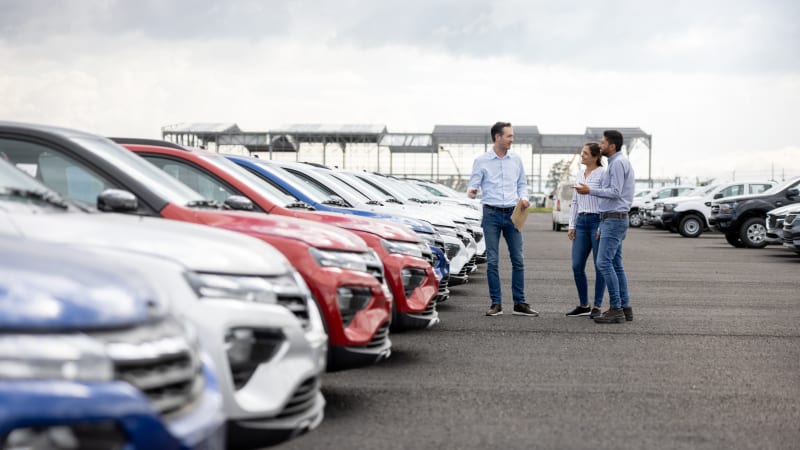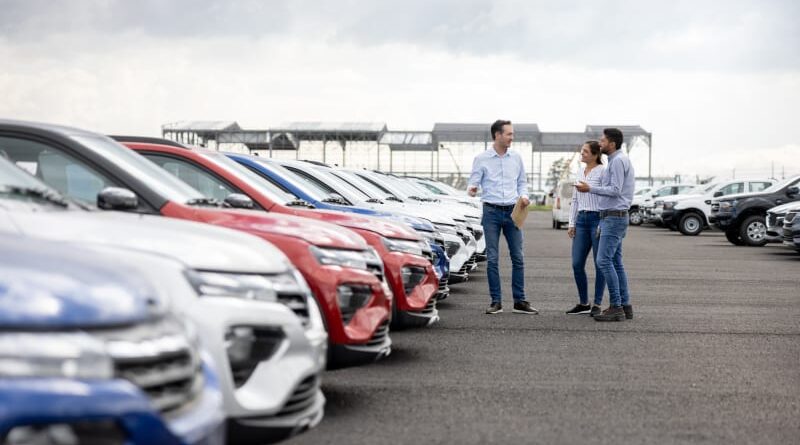New Market Outlook Report says car buying will get better in 2024, really

When it comes to economic predictors Figuring It All Out, there are a ton of hurdles to get over. Some of them are: America’s size and economic diversity, the abstractions inherent in any economy, the variety of economic indicators that attempt to make the abstractions concrete, and the many, complex ways analysts can mix and match those indicators to translate them into predictions. To make a point and an example, we’ve been hearing, “It’s finally getting better!” for two years. And it has, in ways. But the latest data from Kelley Blue Book indicates the average transaction price of a new car is still over $48,000, where it’s been for at least 18 months. There is more new-car inventory and there are more incentives; on the other hand, a number of popular vehicles cost $5,000 to $10,000 more than they did in 2022. Supply chains are better, but quite a few automaker configurators still show warnings about unavailability before letting you build a vehicle. Interest rates are up. And a regular-sized bag of Cheetos at my local grocery store in the cheap Midwest is still more than $5.
It’s possible that the analysts have meant, “It’s not getting worse nearly as quickly as it used to,” which certainly counts as getting better. But a new market assessment from automotive M&A advisory firm Dave Cantin Group (DCG), the “U.S. Retail Automotive 2024 Market Outlook Report,” (MOR) says this time it’s really going to happen. CEO Dave Cantin told Autoblog, “What’s unique about 2024 is the convergence of multiple factors that favor the consumer materializing throughout the year: a stronger than expected economy and job market, declining interest rates throughout year, inflation continuing to decline and increasing dealer inventory levels.”
In this reading, the past 12 to 18 months have been building into “a more sustainable, slow move toward favorable consumer conditions because of true shifts already underway that will continue throughout 2024.”
The report is aimed at dealers and sales outlets looking for tips on what to expect from 2024 and how to navigate it. We appreciate that the report begins with an honest assessment of the starting conditions: “More than one executive (OEM, supplier, or dealership) publicly describes the results since COVID as ‘better than we deserved.’ Indeed, over the past 3+ years it seems like everyone won – everyone, that is, except the consumer (who has paid higher prices for fewer choices, longer lead times and more competition to get a vehicle at all).”
And skipping ahead to the conclusion, the bittersweet news can be summed up as, “On balance, the industry is entering 2024 expecting a ‘new normal’ that won’t look quite as attractive as it did in 2023, but better than it did (for manufacturers and dealerships) in 2019. The CEO of a leading private dealership put it this way: ‘At the start of 2023, we said we’d be happy with 80% of our 2022 results. We’re saying it again this year – and this time we mean it.'”
Won’t be as bad as it has been, won’t be as good as it used to be.
There are some worthwhile nuggets on the consumer side. The FTC’s Combatting Auto Retail Scams (CARS) Rule, currently delayed and awaiting implementation while dealer associations fight it, seeks to curb or eliminate so-called junk fees and bait-and-switch sales tactics. The DCG report believes that even if CARS is implemented, not only will the effect “be felt unevenly across states,” but it also “will mostly be enforced through investigations after consumer complaints of misconduct; enforcement is expected to be particularly strict on recordkeeping and financial transparency clauses, which are considered more ‘tangible’ and easier to enforce than other standards.” This means a consumer would have to get taken first, then fight for redress — not the straightforward less expensive experience we’d hope for, but perhaps some deterrent against the worst actors.
Brick-and-mortar storefronts are still the sales powerhouse, with 80% of respondents saying they plan to buy their next vehicle the old-fashioned way. Another potential win for consumers is when MOR states, “Buyers remain committed to comparing dealer options: in 2024, we expect proactive dealers will get aggressive about demonstrating value compared to competitors.” This can be done in easier, traditional ways such as “price transparency and price competitiveness,” and secondary perks like warranty levels, servicing, and convenience. A side dish to that is something like Toyota adding Silver Certification to its CPO program, offering lower-priced but high-mileage used cars with a measure of warranty security.
The DCG crystal ball believes “anticipated rate drops in mid-to-late 2024 are likely to unlock pent up demand, resulting in greater vehicle sales, especially for buyers who wish to purchase through traditional or alternative auto financing models.” This will speak to the 27% of vehicle buyers who’ve waited to get into a new ride due to high APRs.
SUVs and pickups are going to get more popular. The Alliance for Automotive Innovation said that in 2022, the rough body style breakdown of vehicles then on the road was 35% sedan and 36% SUV. DCG found “53% of consumers are most likely to choose an SUV or Truck for their next vehicle, compared to 46% [of respondents] who currently drive an SUV or Truck; in contrast, only 26% are likely to choose a sedan.” The reasoning? “Reliability, versatility, and safety, despite higher price tags.” Which is … interesting.
And they’ll be more of the kinds of products consumers want, electrified vehicles at sensible price ranges — meaning hybrids. “The consumer is gaining some influence in the auto industry, nowhere more so than in the non-ICE sector. Consumer demand for EVs is falling while interest in hybrids is increasing and we’re seeing automakers pivot on their strategies in real-time.”
The report is detailed reading, but anyone who’s really into researching their next vehicle might have a look. The rules of poker overlap with the rules of negotiating a car — sometimes you’re not playing the hand, you’re playing the psychology of the person across from you.
More important, we’ll find out in 11 months if DCG was correct, and it really was better this year.




